-

Jun
01
The Sustainable Agriculture Research and Education (SARE) program receives funding

The United States Department of Agriculture (USDA) has announced an investment of $46 million in the Sustainable Agriculture Research and Education (SARE) program. The SARE program has supported farmer-driven grants and grassroots education programs resulting in climate-smart solutions for farms and ranches in every state and island protectorate since 1988.
Read more
-

Jun
01
US House request Farm Bill feedback
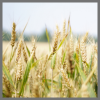
The United States House of Representatives Committee on Agriculture is requesting input on the next version of the Farm Bill. The committee has published an online portal to collect feedback and opinions. Committee leaders believe this tool will allow members to better share the experiences and priorities of agriculture producers and consumers.
Read more
-

Jun
01
USDA announces various funding for underserved and veteran farmers
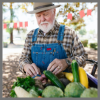
The United States Department of Agriculture (USDA) has announced a variety of funding for underserved and veteran farmers. The two new grant programs, the Indigenous Animals Harvesting and Meat Processing Grant Program and the Local Meat Capacity Grant Program are part of the broader $1 billion American Rescue Plan investment to expand processing capacity for small and midsized meat and poultry processors.
Read more
-

Jun
01
USDA introduces “Cultivating Scientific Innovation”

The United States Department of Agriculture (USDA) has published the USDA Science and Research Strategy, 2023-2026: Cultivating Scientific Innovation. The publication details the vision for transforming United States agriculture through science and innovation and outlines USDA’s highest scientific priorities.
Read more
-

May
25
Foundation Week – One Day for ASAS
e78e7007-8b7f-4984-b249-947d25f2ba26.png?sfvrsn=f48e51d1_1)
Today is our inaugural giving day, One Day for ASAS! This is the time for us to come together to give back and support our members through all stages of their careers. Give today to support the next generation of animal scientists and to express gratitude for ASAS being that gathering place where many have become lifelong friends.
Read more
-

May
24
Foundation Week – May 24th
779a709d-f1e6-4d96-adcd-0c7da76508ef.png?sfvrsn=ac8c51d1_1)
Today, we continue to share and celebrate your generosity's impact on our members throughout their careers. In addition to our daily posts, visit ASAS Foundation Impact to see how philanthropy has made a difference for our members this year.
Read more
-

May
23
Foundation Week – May 23rd, 2023
.png?sfvrsn=9b7050d1_1)
Do you have a passion for supporting current and future animal scientists? Did you know that, thanks to charitable contributions, the ASAS Foundation supports travel scholarships, prestigious awards, distinguished lectures, and so much more?
Read more
-

May
22
Foundation Week – May 22nd, 2023
.png?sfvrsn=4f7650d1_1)
Today we launch our annual ASAS Foundation Week and our inaugural giving day, One Day for ASAS!
Read more
-

May
18
Interpretive Summary: Factors associated with the time and magnitude of the nadir body condition score in early lactation and its subsequent effects on fertility of Holstein cows
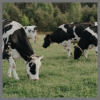
The transition from gestation to lactation requires adjustments in nutrient consumption that are challenging for the postpartum dairy cow. As milk energy output increases more rapidly than energy intake, most cows mobilize fat and labile protein from body energy reserves, which results in reductions in body condition score during early lactation.
Read more
-

May
18
Interpretive Summary: Effects of maternal methionine supplementation on the response of Japanese quail (Coturnix coturnix japonica) chicks to heat stress
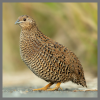
The deficiency of nutrients such as methionine in the diet of birds is affecting fertility rate, egg production, egg weight, and progeny weight. In addition, the maternal environment influences gene expression through epigenetic mechanisms, where the conditions experienced by the parental generation during embryonic development can produce effects on the progeny. This study investigates how methionine supplementation in the diet of quail hens can reduce the effects of oxidative stress and improve the performance of progeny subjected to heat stress during growth.
Read more
-

May
18
Interpretive Summary: Genetic and phenotypic relationships between ewe reproductive performance and wool and growth traits in Uruguayan Ultrafine Merino sheep
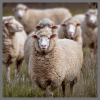
Fiber diameter (FD), clean fleece weight (CFW), live weight (LW), and reproductive performance are important traits in Merino flocks. This study estimated the genetic parameters for a range of production traits and ewe reproductive performance.
Read more
-

May
18
Interpretive Summary: Effects of dairy cow temperament on milk yield: a systematic review and meta-analysis
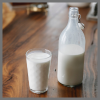
Individual differences in the behavior of dairy cows can affect their productive performance. In an attempt to summarize the scientific information available, we conducted a systematic review and meta-analysis to identify the effects of dairy cows’ temperament on milk yield.
Read more
-

May
18
Interpretive Summary: Applying the indicator amino acid oxidation technique in the domestic cat: results of a pilot study and development of a non-steady state prediction model

It is necessary to apply more sensitive techniques to improve our limited understanding of amino acid (AA) requirements of adult cats. The non-invasive indicator amino acid oxidation (IAAO) technique is highly sensitive in mature animals. However, while it has been widely applied in different species, this technique has yet to be used in cats.
Read more
-

May
18
Interpretive Summary: Effects of weight loss and feeding specially formulated diets on the body composition, blood metabolite profiles, voluntary physical activity, and fecal metabolites and microbiota of obese dogs

In this study, we aimed to determine the effects of restricted feeding of specially formulated foods on weight loss, body composition, voluntary physical activity, serum hormones and oxidative stress markers, and fecal metabolites and microbiota populations of obese dogs. A control (OR) food was fed during a 4-wk baseline to identify intake needed to maintain the body weight (BW).
Read more
-

May
18
Interpretive Summary: Short communication: diversity of endogenous avian leukosis virus subgroup E elements in 11 chicken breeds
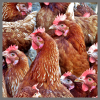
Avian leukemia virus subgroup E (ALVE) is an endogenous retrovirus, which is extensively integrated with the chicken genome, and has some effects on chicken production traits and appearance. Most of the current studies on ALVE insertion sites were conducted in standard breeds.
Read more
-

May
11
Interpretive Summary: Effects of lasalocid, narasin, or virginiamycin supplementation on rumen parameters and performance of beef cattle fed forage-based diet
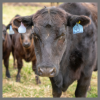
Feed additives are nutritional tools that benefit dietary digestibility and nutrient utilization, alter ruminal fermentation routes, and improve cattle growth and efficiency, thus increasing productivity and profitability in beef cattle systems. Nonetheless, most of the current research focuses on supplementing feed additives in high-concentrate diets.
Read more
-

May
11
Interpretive Summary: Level of feeding and stage of maturity affects diet digestibility and protein and fat deposition in cross-bred lambs
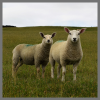
Understanding animal responses to changes in nutrition will assist to create more efficient red meat production systems. Complex interactions exist due to the quality, physical characteristics and level of feeding of the diet, and the nutritional history of the animal. The resultant changes to body composition and the partitioning of energy to tissues has important implications for producers.
Read more
-

May
11
Interpretive Summary: Effects of adding ruminal propionate on dry matter intake and glucose metabolism in steers fed a finishing ration
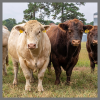
Propionate metabolism by the liver is thought to be a key regulator of appetite and feed intake of animals, including cattle. Previous research has shown that providing propionate to the rumen of cattle decreases feed intake.
Read more
-

May
11
Interpretive Summary: Influence of fiber-rich coproducts on nutrient and energy digestibility and utilization in sows
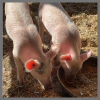
Coproducts from the food and agricultural industries have the potential to partly substitute grain in diets for empty nonlactating sows. Many coproducts are high in fiber and with diverse fiber composition. Some being easily fermented, while others are more resistant to fermentation giving rise to a large variation in the total tract digestibility and utilization of nutrients and energy.
Read more
-

May
11
Interpretive Summary: Effects of dietary crude protein level and sodium butyrate protected by medium-chain fatty acid salts on performance and gut health in weaned piglets
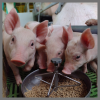
Reducing dietary levels of crude protein (CP) and the use of feed-additives such as sodium butyrate protected by medium-chain fatty acid salts are currently under investigation as nutritional strategies with beneficial effects on the intestinal barrier, and consequently on the health of weaned piglets.
Read more
 JunThe Sustainable Agriculture Research and Education (SARE) program receives funding
JunThe Sustainable Agriculture Research and Education (SARE) program receives funding The United States Department of Agriculture (USDA) has announced an investment of $46 million in the Sustainable Agriculture Research and Education (SARE) program. The SARE program has supported farmer-driven grants and grassroots education programs resulting in climate-smart solutions for farms and ranches in every state and island protectorate since 1988.
The United States Department of Agriculture (USDA) has announced an investment of $46 million in the Sustainable Agriculture Research and Education (SARE) program. The SARE program has supported farmer-driven grants and grassroots education programs resulting in climate-smart solutions for farms and ranches in every state and island protectorate since 1988. JunUS House request Farm Bill feedback
JunUS House request Farm Bill feedback The United States House of Representatives Committee on Agriculture is requesting input on the next version of the Farm Bill. The committee has published an online portal to collect feedback and opinions. Committee leaders believe this tool will allow members to better share the experiences and priorities of agriculture producers and consumers.
The United States House of Representatives Committee on Agriculture is requesting input on the next version of the Farm Bill. The committee has published an online portal to collect feedback and opinions. Committee leaders believe this tool will allow members to better share the experiences and priorities of agriculture producers and consumers. JunUSDA announces various funding for underserved and veteran farmers
JunUSDA announces various funding for underserved and veteran farmers The United States Department of Agriculture (USDA) has announced a variety of funding for underserved and veteran farmers. The two new grant programs, the Indigenous Animals Harvesting and Meat Processing Grant Program and the Local Meat Capacity Grant Program are part of the broader $1 billion American Rescue Plan investment to expand processing capacity for small and midsized meat and poultry processors.
The United States Department of Agriculture (USDA) has announced a variety of funding for underserved and veteran farmers. The two new grant programs, the Indigenous Animals Harvesting and Meat Processing Grant Program and the Local Meat Capacity Grant Program are part of the broader $1 billion American Rescue Plan investment to expand processing capacity for small and midsized meat and poultry processors. JunUSDA introduces “Cultivating Scientific Innovation”
JunUSDA introduces “Cultivating Scientific Innovation” The United States Department of Agriculture (USDA) has published the USDA Science and Research Strategy, 2023-2026: Cultivating Scientific Innovation. The publication details the vision for transforming United States agriculture through science and innovation and outlines USDA’s highest scientific priorities.
The United States Department of Agriculture (USDA) has published the USDA Science and Research Strategy, 2023-2026: Cultivating Scientific Innovation. The publication details the vision for transforming United States agriculture through science and innovation and outlines USDA’s highest scientific priorities. MayFoundation Week – One Day for ASAS
MayFoundation Week – One Day for ASASe78e7007-8b7f-4984-b249-947d25f2ba26.png?sfvrsn=f48e51d1_1) Today is our inaugural giving day, One Day for ASAS! This is the time for us to come together to give back and support our members through all stages of their careers. Give today to support the next generation of animal scientists and to express gratitude for ASAS being that gathering place where many have become lifelong friends.
Today is our inaugural giving day, One Day for ASAS! This is the time for us to come together to give back and support our members through all stages of their careers. Give today to support the next generation of animal scientists and to express gratitude for ASAS being that gathering place where many have become lifelong friends. MayFoundation Week – May 24th
MayFoundation Week – May 24th779a709d-f1e6-4d96-adcd-0c7da76508ef.png?sfvrsn=ac8c51d1_1) Today, we continue to share and celebrate your generosity's impact on our members throughout their careers. In addition to our daily posts, visit ASAS Foundation Impact to see how philanthropy has made a difference for our members this year.
Today, we continue to share and celebrate your generosity's impact on our members throughout their careers. In addition to our daily posts, visit ASAS Foundation Impact to see how philanthropy has made a difference for our members this year. MayFoundation Week – May 23rd, 2023
MayFoundation Week – May 23rd, 2023.png?sfvrsn=9b7050d1_1) Do you have a passion for supporting current and future animal scientists? Did you know that, thanks to charitable contributions, the ASAS Foundation supports travel scholarships, prestigious awards, distinguished lectures, and so much more?
Do you have a passion for supporting current and future animal scientists? Did you know that, thanks to charitable contributions, the ASAS Foundation supports travel scholarships, prestigious awards, distinguished lectures, and so much more? MayFoundation Week – May 22nd, 2023
MayFoundation Week – May 22nd, 2023.png?sfvrsn=4f7650d1_1) Today we launch our annual ASAS Foundation Week and our inaugural giving day, One Day for ASAS!
Today we launch our annual ASAS Foundation Week and our inaugural giving day, One Day for ASAS! MayInterpretive Summary: Factors associated with the time and magnitude of the nadir body condition score in early lactation and its subsequent effects on fertility of Holstein cows
MayInterpretive Summary: Factors associated with the time and magnitude of the nadir body condition score in early lactation and its subsequent effects on fertility of Holstein cows The transition from gestation to lactation requires adjustments in nutrient consumption that are challenging for the postpartum dairy cow. As milk energy output increases more rapidly than energy intake, most cows mobilize fat and labile protein from body energy reserves, which results in reductions in body condition score during early lactation.
The transition from gestation to lactation requires adjustments in nutrient consumption that are challenging for the postpartum dairy cow. As milk energy output increases more rapidly than energy intake, most cows mobilize fat and labile protein from body energy reserves, which results in reductions in body condition score during early lactation. MayInterpretive Summary: Effects of maternal methionine supplementation on the response of Japanese quail (Coturnix coturnix japonica) chicks to heat stress
MayInterpretive Summary: Effects of maternal methionine supplementation on the response of Japanese quail (Coturnix coturnix japonica) chicks to heat stress The deficiency of nutrients such as methionine in the diet of birds is affecting fertility rate, egg production, egg weight, and progeny weight. In addition, the maternal environment influences gene expression through epigenetic mechanisms, where the conditions experienced by the parental generation during embryonic development can produce effects on the progeny. This study investigates how methionine supplementation in the diet of quail hens can reduce the effects of oxidative stress and improve the performance of progeny subjected to heat stress during growth.
The deficiency of nutrients such as methionine in the diet of birds is affecting fertility rate, egg production, egg weight, and progeny weight. In addition, the maternal environment influences gene expression through epigenetic mechanisms, where the conditions experienced by the parental generation during embryonic development can produce effects on the progeny. This study investigates how methionine supplementation in the diet of quail hens can reduce the effects of oxidative stress and improve the performance of progeny subjected to heat stress during growth. MayInterpretive Summary: Genetic and phenotypic relationships between ewe reproductive performance and wool and growth traits in Uruguayan Ultrafine Merino sheep
MayInterpretive Summary: Genetic and phenotypic relationships between ewe reproductive performance and wool and growth traits in Uruguayan Ultrafine Merino sheep Fiber diameter (FD), clean fleece weight (CFW), live weight (LW), and reproductive performance are important traits in Merino flocks. This study estimated the genetic parameters for a range of production traits and ewe reproductive performance.
Fiber diameter (FD), clean fleece weight (CFW), live weight (LW), and reproductive performance are important traits in Merino flocks. This study estimated the genetic parameters for a range of production traits and ewe reproductive performance. MayInterpretive Summary: Effects of dairy cow temperament on milk yield: a systematic review and meta-analysis
MayInterpretive Summary: Effects of dairy cow temperament on milk yield: a systematic review and meta-analysis Individual differences in the behavior of dairy cows can affect their productive performance. In an attempt to summarize the scientific information available, we conducted a systematic review and meta-analysis to identify the effects of dairy cows’ temperament on milk yield.
Individual differences in the behavior of dairy cows can affect their productive performance. In an attempt to summarize the scientific information available, we conducted a systematic review and meta-analysis to identify the effects of dairy cows’ temperament on milk yield. MayInterpretive Summary: Applying the indicator amino acid oxidation technique in the domestic cat: results of a pilot study and development of a non-steady state prediction model
MayInterpretive Summary: Applying the indicator amino acid oxidation technique in the domestic cat: results of a pilot study and development of a non-steady state prediction model It is necessary to apply more sensitive techniques to improve our limited understanding of amino acid (AA) requirements of adult cats. The non-invasive indicator amino acid oxidation (IAAO) technique is highly sensitive in mature animals. However, while it has been widely applied in different species, this technique has yet to be used in cats.
It is necessary to apply more sensitive techniques to improve our limited understanding of amino acid (AA) requirements of adult cats. The non-invasive indicator amino acid oxidation (IAAO) technique is highly sensitive in mature animals. However, while it has been widely applied in different species, this technique has yet to be used in cats. MayInterpretive Summary: Effects of weight loss and feeding specially formulated diets on the body composition, blood metabolite profiles, voluntary physical activity, and fecal metabolites and microbiota of obese dogs
MayInterpretive Summary: Effects of weight loss and feeding specially formulated diets on the body composition, blood metabolite profiles, voluntary physical activity, and fecal metabolites and microbiota of obese dogs In this study, we aimed to determine the effects of restricted feeding of specially formulated foods on weight loss, body composition, voluntary physical activity, serum hormones and oxidative stress markers, and fecal metabolites and microbiota populations of obese dogs. A control (OR) food was fed during a 4-wk baseline to identify intake needed to maintain the body weight (BW).
In this study, we aimed to determine the effects of restricted feeding of specially formulated foods on weight loss, body composition, voluntary physical activity, serum hormones and oxidative stress markers, and fecal metabolites and microbiota populations of obese dogs. A control (OR) food was fed during a 4-wk baseline to identify intake needed to maintain the body weight (BW). MayInterpretive Summary: Short communication: diversity of endogenous avian leukosis virus subgroup E elements in 11 chicken breeds
MayInterpretive Summary: Short communication: diversity of endogenous avian leukosis virus subgroup E elements in 11 chicken breeds Avian leukemia virus subgroup E (ALVE) is an endogenous retrovirus, which is extensively integrated with the chicken genome, and has some effects on chicken production traits and appearance. Most of the current studies on ALVE insertion sites were conducted in standard breeds.
Avian leukemia virus subgroup E (ALVE) is an endogenous retrovirus, which is extensively integrated with the chicken genome, and has some effects on chicken production traits and appearance. Most of the current studies on ALVE insertion sites were conducted in standard breeds. MayInterpretive Summary: Effects of lasalocid, narasin, or virginiamycin supplementation on rumen parameters and performance of beef cattle fed forage-based diet
MayInterpretive Summary: Effects of lasalocid, narasin, or virginiamycin supplementation on rumen parameters and performance of beef cattle fed forage-based diet Feed additives are nutritional tools that benefit dietary digestibility and nutrient utilization, alter ruminal fermentation routes, and improve cattle growth and efficiency, thus increasing productivity and profitability in beef cattle systems. Nonetheless, most of the current research focuses on supplementing feed additives in high-concentrate diets.
Feed additives are nutritional tools that benefit dietary digestibility and nutrient utilization, alter ruminal fermentation routes, and improve cattle growth and efficiency, thus increasing productivity and profitability in beef cattle systems. Nonetheless, most of the current research focuses on supplementing feed additives in high-concentrate diets. MayInterpretive Summary: Level of feeding and stage of maturity affects diet digestibility and protein and fat deposition in cross-bred lambs
MayInterpretive Summary: Level of feeding and stage of maturity affects diet digestibility and protein and fat deposition in cross-bred lambs Understanding animal responses to changes in nutrition will assist to create more efficient red meat production systems. Complex interactions exist due to the quality, physical characteristics and level of feeding of the diet, and the nutritional history of the animal. The resultant changes to body composition and the partitioning of energy to tissues has important implications for producers.
Understanding animal responses to changes in nutrition will assist to create more efficient red meat production systems. Complex interactions exist due to the quality, physical characteristics and level of feeding of the diet, and the nutritional history of the animal. The resultant changes to body composition and the partitioning of energy to tissues has important implications for producers. MayInterpretive Summary: Effects of adding ruminal propionate on dry matter intake and glucose metabolism in steers fed a finishing ration
MayInterpretive Summary: Effects of adding ruminal propionate on dry matter intake and glucose metabolism in steers fed a finishing ration Propionate metabolism by the liver is thought to be a key regulator of appetite and feed intake of animals, including cattle. Previous research has shown that providing propionate to the rumen of cattle decreases feed intake.
Propionate metabolism by the liver is thought to be a key regulator of appetite and feed intake of animals, including cattle. Previous research has shown that providing propionate to the rumen of cattle decreases feed intake. MayInterpretive Summary: Influence of fiber-rich coproducts on nutrient and energy digestibility and utilization in sows
MayInterpretive Summary: Influence of fiber-rich coproducts on nutrient and energy digestibility and utilization in sows Coproducts from the food and agricultural industries have the potential to partly substitute grain in diets for empty nonlactating sows. Many coproducts are high in fiber and with diverse fiber composition. Some being easily fermented, while others are more resistant to fermentation giving rise to a large variation in the total tract digestibility and utilization of nutrients and energy.
Coproducts from the food and agricultural industries have the potential to partly substitute grain in diets for empty nonlactating sows. Many coproducts are high in fiber and with diverse fiber composition. Some being easily fermented, while others are more resistant to fermentation giving rise to a large variation in the total tract digestibility and utilization of nutrients and energy. MayInterpretive Summary: Effects of dietary crude protein level and sodium butyrate protected by medium-chain fatty acid salts on performance and gut health in weaned piglets
MayInterpretive Summary: Effects of dietary crude protein level and sodium butyrate protected by medium-chain fatty acid salts on performance and gut health in weaned piglets Reducing dietary levels of crude protein (CP) and the use of feed-additives such as sodium butyrate protected by medium-chain fatty acid salts are currently under investigation as nutritional strategies with beneficial effects on the intestinal barrier, and consequently on the health of weaned piglets.
Reducing dietary levels of crude protein (CP) and the use of feed-additives such as sodium butyrate protected by medium-chain fatty acid salts are currently under investigation as nutritional strategies with beneficial effects on the intestinal barrier, and consequently on the health of weaned piglets.



